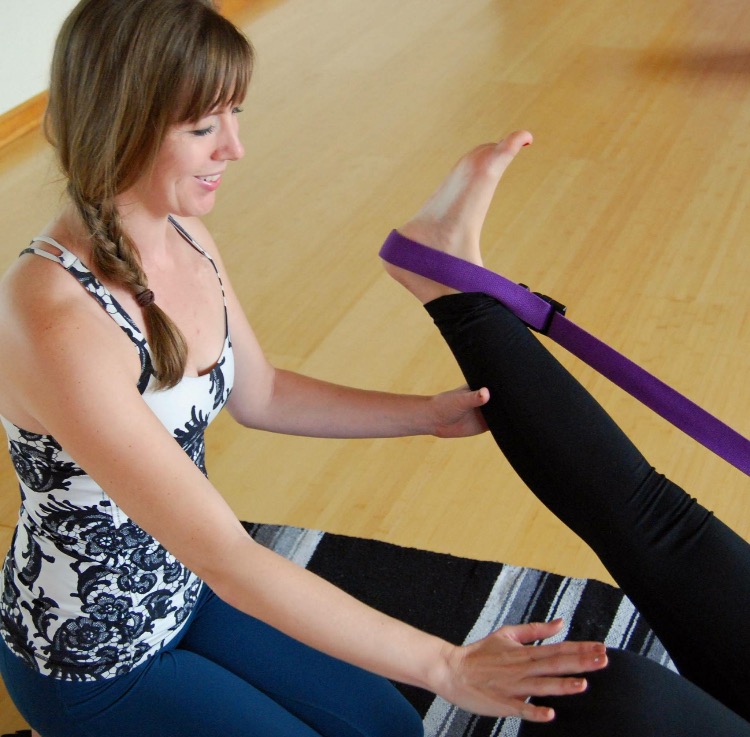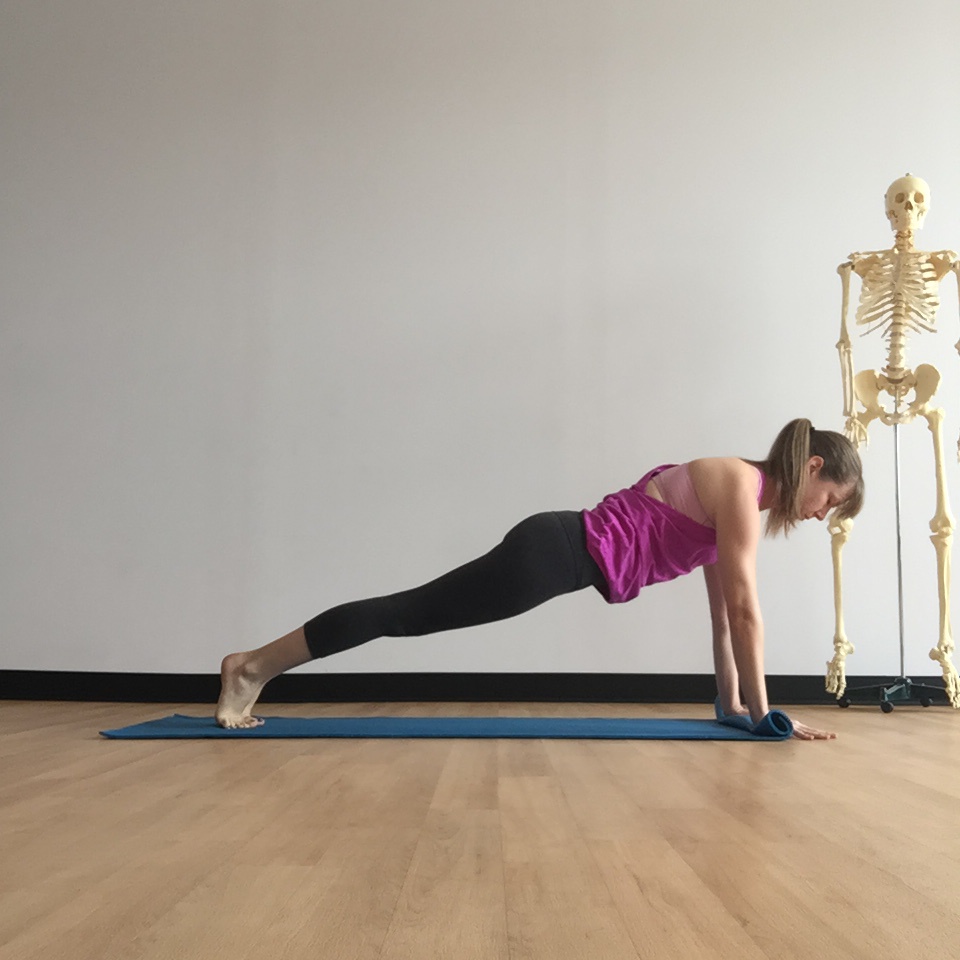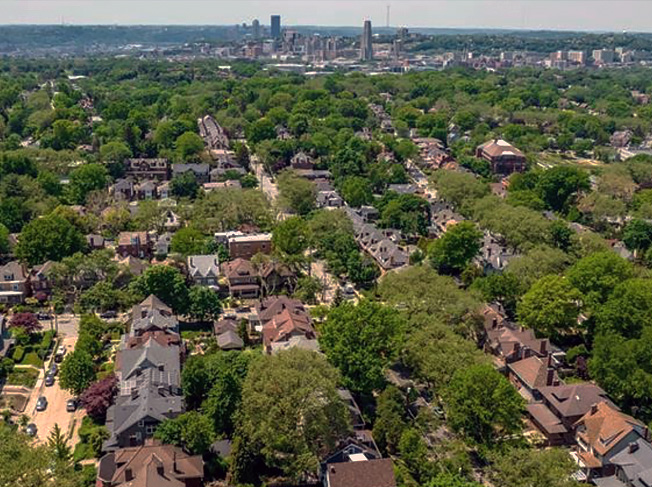Yoga in Squirrel Hill – Kristie Lindblom of Schoolhouse Yoga
 Welcome to the first of four EXTENDED features from our Spring Issue, ONLY available here on the Burrow!
Welcome to the first of four EXTENDED features from our Spring Issue, ONLY available here on the Burrow!
Interviews by Mickey Gast
Kristie Lindblom
How did you discover yoga, Kristie?
In 1994 I was living in New Jersey. I was a dancer at a performing arts high school. One of my dance teachers used the physical postures to warm us up. That’s how I was introduced to yoga. Then I came to Pittsburgh in 1998 to go to Point Park University as a dance major. When I was 18, I was diagnosed with a congenital heart condition and ended up having a pacemaker defibrillator placed. That’s when my dance career was over. I stopped moving altogether, but I did finish my Degree in Dance and a Degree in Elementary Education.
Some years later, after I became a mother, my pacemaker malfunctioned and it went off. That’s when I went through a crisis which crystallized the one constant that had been in my life to carry me through. And that was movement and yoga. That’s when I decided I wanted to share that, because it had been very healing for me. When my daughter was 18 months, I walked into a studio called Yoga Matrika, ran by Sharon Rudyk. I just walked in and said I wanted to teach.
She let me teach because I had an established daily practice, had taken anatomy and physiology classes and had a degree in teaching. I started teaching a prenatal class and a Vinyasa class for Sharon. I started my teacher training simultaneously.
A few months into that, my defibrillator went off again, and I had to undergo emergency surgery. I was nursing, and they didn’t put me under total anesthesia. I was awake for almost the entire surgery. In preop, I fell back on my training. I started meditating and it calmed me down. I was literally meditating on the operating table. The recovery process was longer due to complications, and being in teacher training was the most amazing thing that could have happened to me. The guidance from my teachers was so valuable at that time.
Learning how to live my life in accordance to the eight limbs of yoga could never cure my heart condition, but it healed me. It made me feel whole.
So you used your heart condition to help others deal with their too?
Yes. Jefferson Hospital was looking for yoga teachers to teach stress management for patients with heart disease. That’s what I did for the four years that they were here in Pittsburgh. I also started to teach stage movement using some of the moves of yoga for Point Park University. I got a Master’s Degree with a focus on how modern yoga teachers contextualize culture through their pedagogy.
What’s your approach to yoga?
Discover how much distance you can find between your fingertips, because you’re going to find the same alignment. My classes are comprehensive. I’ll have a philosophical theme, with tidbits of history. I talk about anatomy a lot too. There’s always mediation and pranayama. I get a range of people in my class, of all different body shapes and sizes. The oldest student I’ve had was 98. My core group is people who are interested in selfdevelopment and finding wholeness, not six pack abs.

What’s one thing that someone coming to your class should know?
Traditionally, the goals of yoga have never been to get fit. I am more concerned about my students giving themselves the freedom to find out something new about the way they move, breathe, think and feel. Through studying anatomy, I’ve figured out that the only consistent thing about the way the human body is shaped is inconsistency. So I’d love it for people to come to class with a mindset open to play, exploration and discovery. There’s never an expectation of perfection.
Is there anything that you learn from the people who come to your class?
My students teach me way more than I teach them. I’ve learned that if I give people space to explore and to heal, they figure it out on their own. I don’t need to push, because it unfolds by itself. Don’t push, just nurture the space.
How is teaching in Squirrel Hill?
What I love about teaching here is that I always see friendly faces. There’s a such a sense of community. Even walking down Murray, people smile and nod at you. It’s like a small town atmosphere. One of the things that I love about teaching here is that people carry that when they come into class. I have students who stay after class just to talk to each other. They form bonds, and that’s amazing.
How do you incorporate playfulness in your practice?
Don’t take yourself too seriously. Exploration through What do I notice? What do I feel? is important. Be willing to be wrong, and you’ll learn so much more. My number one goal is to keep everyone safe, but play is important.
What should people look for in a good yoga teacher?
You need to have the right chemistry. If you leave the class feeling uplifted, and a little bit more connected, that’s a clue that something is working for you. How does you body feel after the class? How about your mind and your emotions? You’ll know in your gut if it feels right.
Are there any misconceptions about yoga that you’d like to clear up?
The yoga that we practice today looks nothing like the yoga that was practiced even 150 years ago, not to mention 2500 years ago. There are so many lineages. It’s not a long continuous line, but threads that diverge. There are varied philosophies. David Gordon White, a wellknown yoga scholar, said that talking about yoga is like talking about art you can refer to the Mona Lisa, street graffiti or anything in between. There is very little understanding about a lot of the traditional goals in yoga. There’s a bigger context than what you see.
What else inspires you, outside of yoga?
I like being outdoors, hiking, backpacking. I also draw a lot of inspiration from reading. I love dancing and moving my body. My husband is in a punk bad, so I go out and see him perform. Spending time with my family also energizes me.
What do you like to do in Squirrel Hill?
I love the food scene here and going to the farmer’s market. I love that I can walk my kids to school through Frick park. It does have a small town feel. The Pittsburgh yoga community has blossomed in the past five years, and the people in it are very genuine.
What’s next for you?
I’m really interested in the pedagogy of modern yoga teachers and how we can raise the bar on the teaching without infringing on the studentteacher relationship, which is central to yoga practice. I’d love to explore that through a PhD.
Where can people find you?
I teach at Schoolhouse Yoga. You can also find more about my practice on my website (http://www.breathebalancebe.com)




